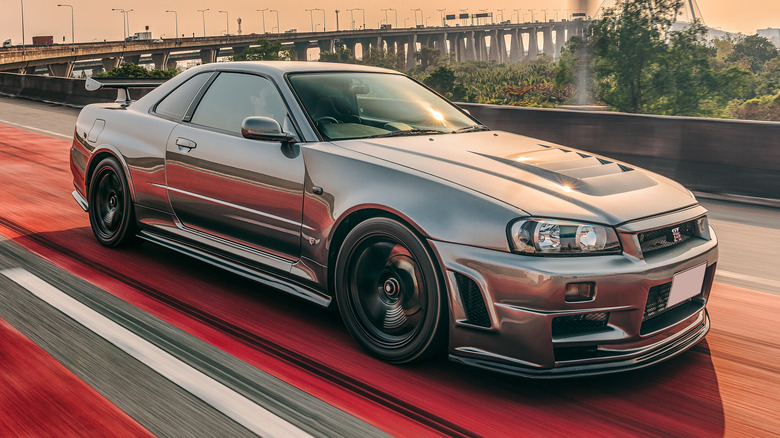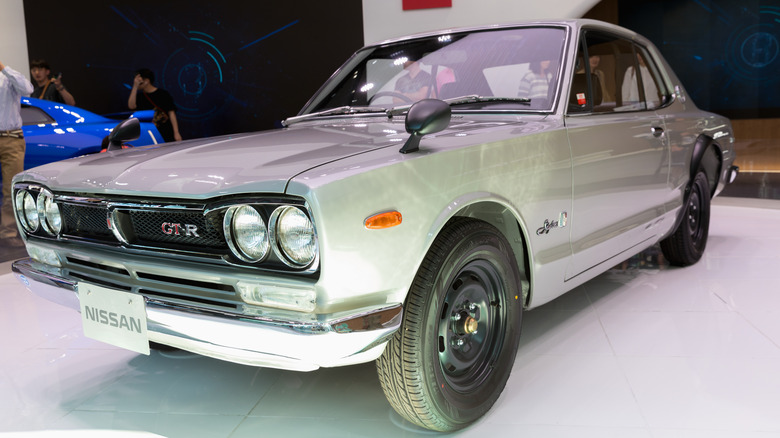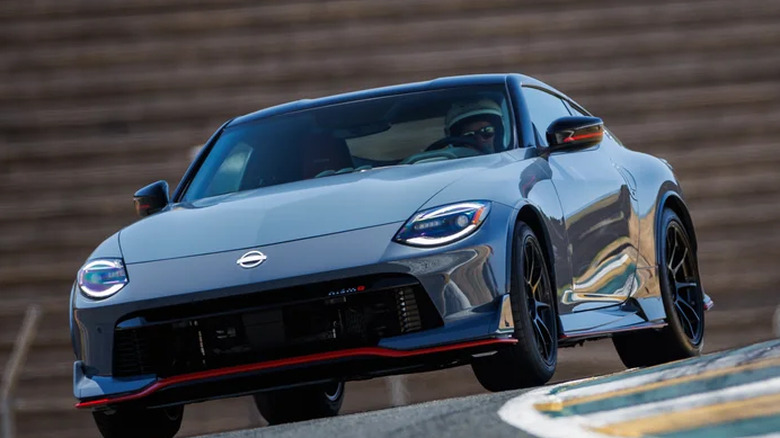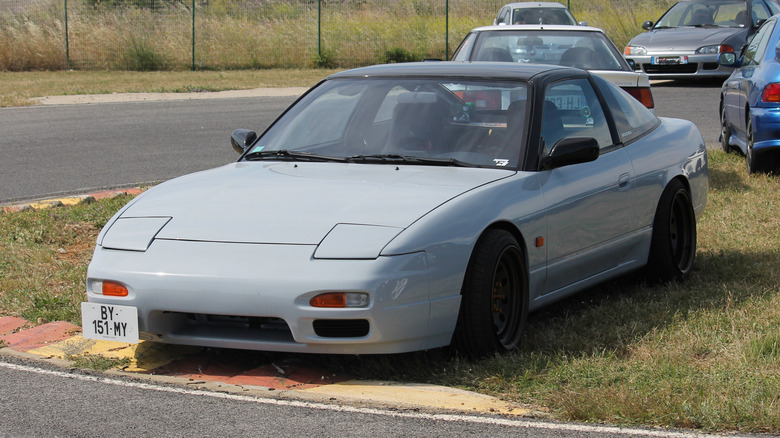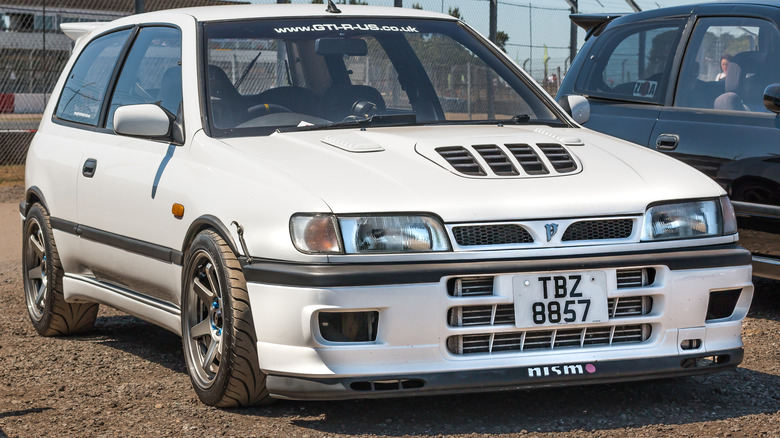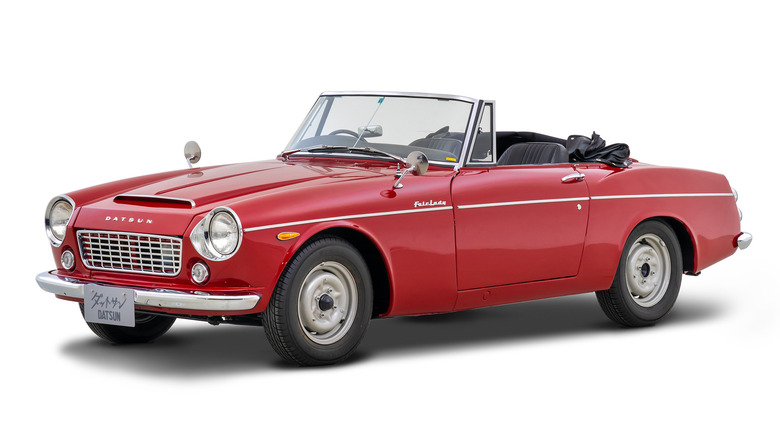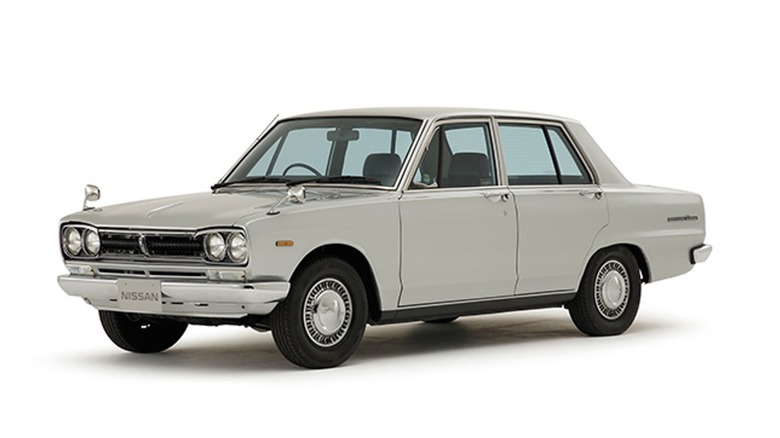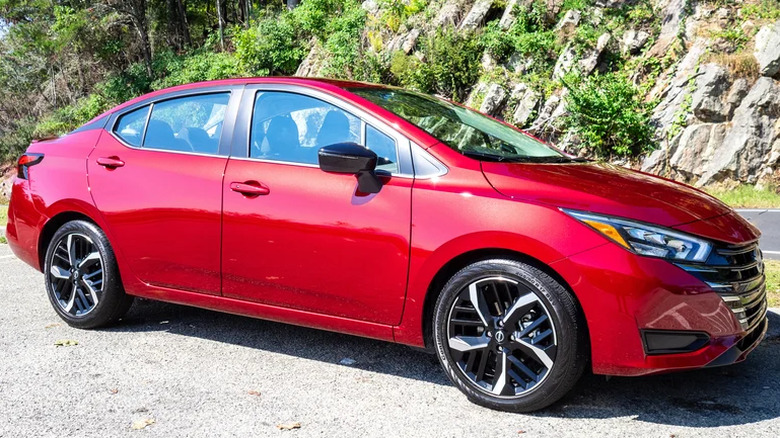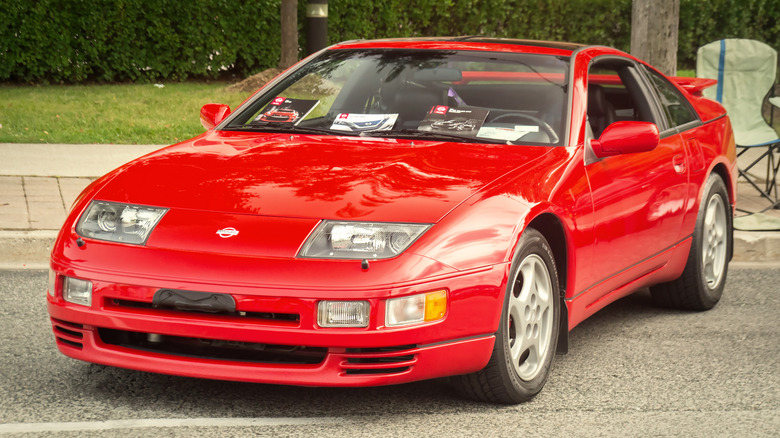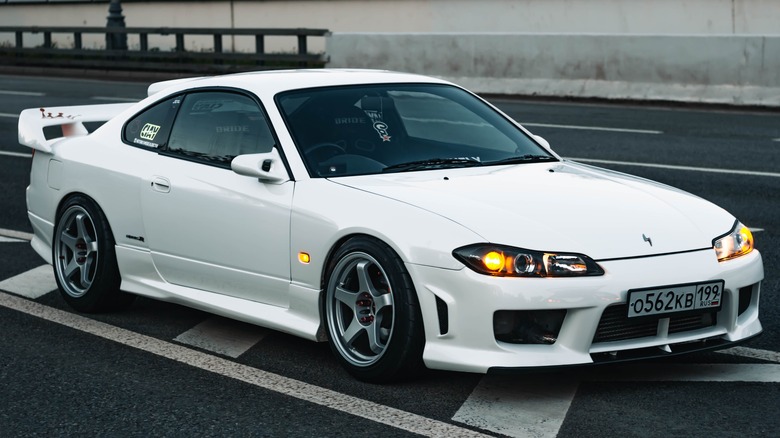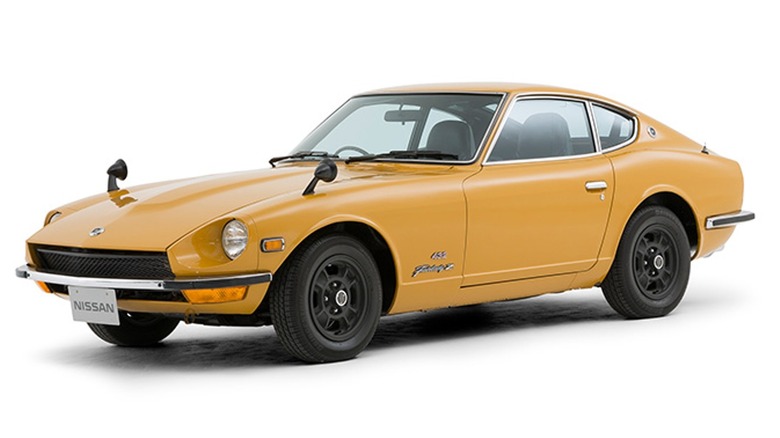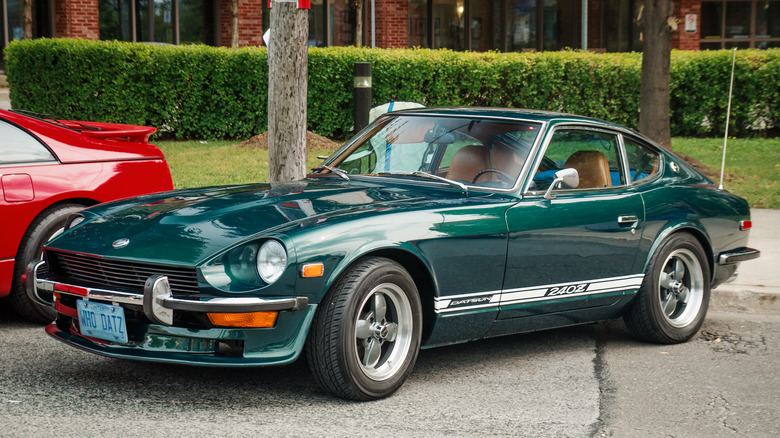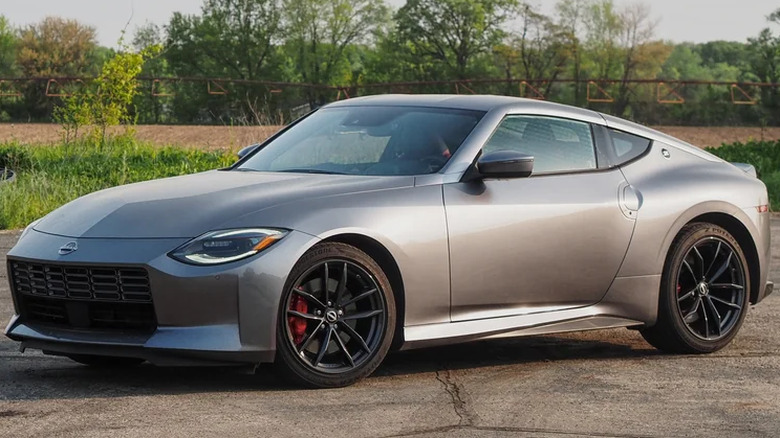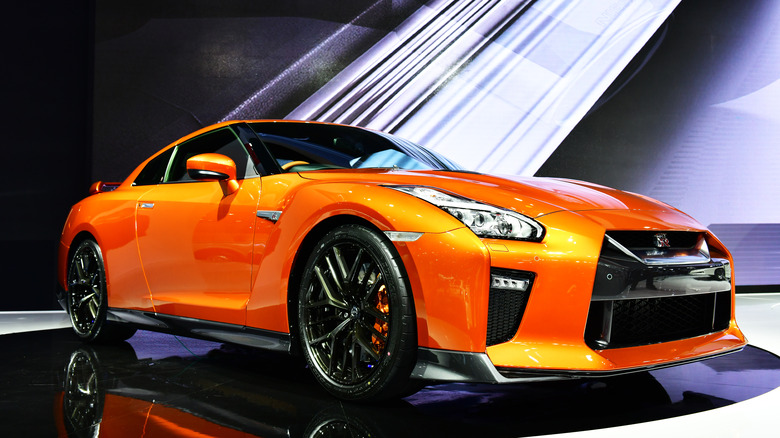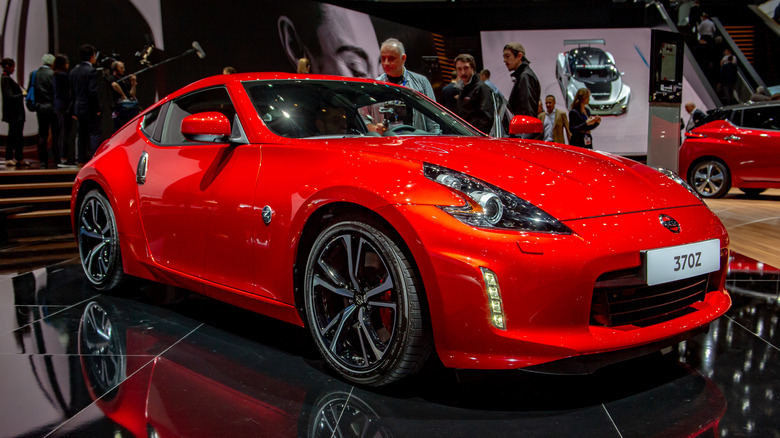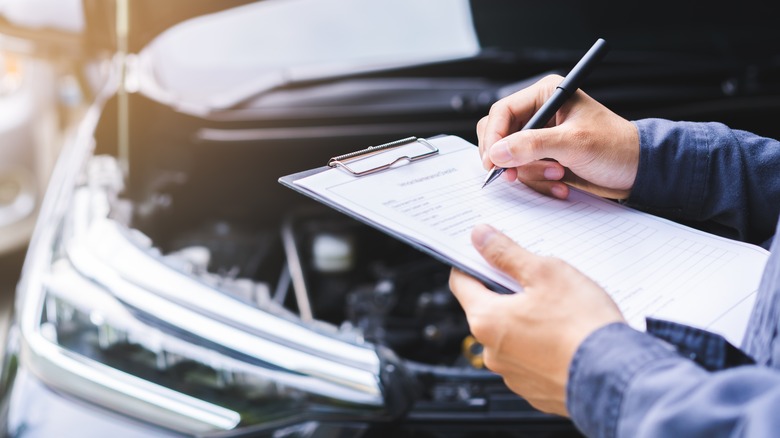15 Of The Most Important Nissans Of All Time
Nissan has seen plenty of highs and lows throughout its 90 years of existence, going from a relatively unknown Japanese manufacturer at the end of World War II to a global carmaking juggernaut just a couple of decades later. The name Nissan was first used by the company in 1933, and in its early years it focused on making cars and trucks for the newly-emerging Japanese domestic market. Things really changed in 1958, when Nissan launched in America, trading under the Datsun name. Cars like the 510 and 240Z would come to redefine what the rest of the world thought of Japanese cars, impressing buyers with a combination of style, reliability and an affordable price tag.
Performance has also traditionally been a strong point for the company, with Nissan being responsible for some of the best-loved JDM sports cars of all time. From the earliest Datsun Roadsters right up to the modern range-topping GTR, the brand has spawned dozens of sports cars that continue to retain avid fan bases for decades after they are first unveiled. In recent years, Nissan has made a name for itself as an early promoter of electric vehicles, with its signature Leaf EV becoming the best-selling EV in the world in 2020. With the company now hard at work launching its electric Ariya crossover and the new Nissan Z car, it's a great time to take a look back at 15 of the most important Nissan cars so far.
15. Nissan Skyline 2000GTR Hakosuka
The first Nissan Skyline GTR was developed as a rival to the Porsche 904 GTS, which was dominating Japanese circuit racing at the time. The GTR was the first Japanese car to beat its foreign rival, and it did so with conviction, winning an astonishing 49 races in a row according to Evo. It was this racing prowess that began the legend of the GTR badge, and it remains among the most revered (and collectible) of any JDM car.
The car became known as "Hakosuka", which is a portmanteau of two Japanese words, hako, meaning boxy, and sukarain, a type of mountain road from which the car takes its name. The car came with a 2.0L S20 engine that made 160 horsepower, a very impressive figure for its day. Only 1,113 two-door Hakosukas were ever made, making them incredibly rare today. They're considered a kind of "holy grail" collector's item, and on the occasion that a genuine GTR does come up for sale, they're usually listed as price-on-asking only.
14. Z Nismo
When it comes to Nissan, two things suggest peak performance: The "Nismo" name and the letter Z. Cram them both together and you get the Z NISMO. It's a car designed for the track, with firmer suspension and improved steering. Aerodynamics are again, performance-focused, with splitters stuck to every available surface and a very noticeable ducktail spoiler giving those rear wheels a bit of extra downforce.
The 2024 Z NISMO has around 20 horsepower more than the base Z, courtesy of a three-liter V6 with a twin-turbo buckled to it. Overall grunt isn't the only area Nissan's track star stands out compared to its more basic compatriots. The suspension has been stiffened, the chassis is more rigid overall, and the steering has been tuned for consistency — so even if you're having a bit too much fun with the throttle, you should still be able to keep the vehicle in check when confronted with a corner. It also has some nods to its own heritage, with its nose harking back to the Fairlady 240ZG and other iconic Z cars.
13. Nissan 240SX
The mid-'80s saw a decline in sales for Nissan's cars internationally, which was blamed on a number of factors including a stagnating lineup and new competition from Korean automakers. The 240SX was developed as a remedy to that decline, and it worked, becoming a sales success and helping to lift Nissan out of the doldrums both in terms of its finances and its reputation. It was described by Car and Driver as, "rekindl[ing] the spirit of the original Z-car," with its simple rear-wheel-drive layout and streamlined, modern design.
It was a hit with sports car buyers but its low starting price also meant it became popular with the drift community, as its balanced chassis and straightforward construction made it an ideal candidate for modification. Car and Driver list the 240SX's original starting price at $12,999, but today buyers will have to pay even more than that for a pristine example.
12. Nissan Pulsar GTI-R
Nissan might not be as closely associated with rallying as the likes of its Japanese rivals Subaru and Mitsubishi, but the brand has developed several cars for entry into the World Rally Championship over the years. One of those cars is the Pulsar GTI-R, an AWD hot hatch that was built for entry into Group A of the Championship. Regulations at the time meant that 5,000 road-going examples of the car had to be built, and those 5,000 were all sold in Japan and Europe only. But, now they're old enough for Americans to import, and there are a growing number of examples that have been brought Stateside.
The car was fitted with a 2.0L, turbocharged four-cylinder engine that made 227 horsepowe and 210 lb-ft of torque, according to Top Gear. It could go from 0-60 mph in around 5.5 seconds and topped out at 144 mph. Those impressive performance figures were enough to earn it the nickname, "Baby Godzilla," but despite that, the Pulsar GTI-R never enjoyed the same level of recognition as many of its Japanese contemporaries. It might not have the big-name reputation of the likes of the Skyline R32 GTR, but Baby Godzilla is still fast enough to give even modern hot hatches a run for their money.
11. Datsun Fairlady 1500
The Fairlady name has been attached to a number of sporty Nissans and Datsuns over the decades, but one of its earliest uses was the Datsun Fairlady 1500. Unveiled at the Tokyo Motor Show in 1961, Nissan claims that the Fairlady 1500 is the first fully-fledged Japanese sports car. It also played a key part in early Japanese motorsport, with a racing version of the car winning its class in the first-ever Japan GP at Suzuka in 1963. It was based on the chassis of the Datsun 310 and featured the engine from the Nissan Cedric, which according to Nissan made around 80 horsepower.
Its styling was notably different from Nissan's previous cars, and it took much of its design from British sports cars made by the likes of MG and Triumph. However, Curbside Classic reports that early 1500s had the distinction of being sold as three-seaters, with the third seat positioned behind the driver at a right angle. The car continued to be produced until 1970, with a major refresh in 1967 refining the Fairlady's handling and bumping power up to a respectable 145 horsepower according to Curbside Classic.
10. C10 Hakosuka GT-R
While movies like those in the "Fast and the Furious" series shone a new spotlight on JDM cars, the Japanese made wonderful motors long before Vin Diesel stuck his shiny head into a Toyota Supra MK IV. If you want a prime early 1970s example of automotive brilliance from the Land of the Rising Sun, then look no further than the C10 Hakosuka GT-R. The vehicle is in the Skyline family, though notably different from the 80s and 90s models you may be thinking of when it comes to styling.
Under the hood was the two-liter, straight-six S20. It had dual overhead cams and triple side-draft carburetors, and could produce an (impressive for the time) 160 horsepower. All of this was driving a chassis that weighed just 1,500 pounds, which led to the C10's impressive record on the track.
Just over 1,100 were made between 1970 and 1972. These are now highly sought after. Examples in fair condition were going for six figures a couple of years ago. As a result, getting hold of one, should you even find one for sale may cost you.
9. 2023 Nissan Versa
SlashGear has reviewed a good number of Nissans. Most of the vehicles hover around the seven to eight out of ten range — which means they're pretty solid but not mind-blowingly exceptional. Occasionally though, there's an outlier. A recent standout is the 2023 Nissan Versa, which offers a borderline excessive amount of power, great fuel economy, and quality handling at a staggeringly low price point.
You can buy one new for under $16,000. There may not be many used models on the market at the time of writing, but they are likely to be even cheaper if you can spot one. It also has a surprising amount of tech inside it considering the sticker price (though the infotainment system feels a touch dated). While plenty of vehicles on this list show what happens when Nissan pushes into performance, the Versa also shows that the Japanese car company can put together an absolute bargain for those who can't drop six figures on an imported Skyline.
8. Nissan 300ZX Z32
Introduced around the same time as the 240SX, the Z32 300ZX was the second generation of Nissan's range-topping sports car. The previous generation, the Z31, had picked up a reputation as a flabby, disco-poseur's car, according to Car and Driver. But, the new Z32, they said, had flipped the script and become "one of the most alluring cars to appear on the United States market in years." Its styling was vastly improved over the old car, and a modern, streamlined cabin replaced the dated, tacky interior of its predecessor.
Part of its success can be attributed to the research of its designer, Toshio Yamashita. His design was a radical change from Nissan's previous products and Yamashita was adamant that his original sketches were kept to, much to the chagrin of Nissan's engineers. The headlights for the 300ZX were originally deemed too difficult to make, and the engineering team requested that Yamashita change his design to either pop-up headlights or less angular units. But, he turned down the request, and eventually sourced the projectors himself, presenting them to the engineering team, Jalopnik reports. This unique design, along with the Z32's precise handling and Porsche-rivaling performance, cemented its place as one of the best Z cars so far.
7. Nissan Silvia S15 Spec R
The Silvia nameplate has been used on Nissan's sports cars as far back as 1966, but the most recent car to wear the name is the S15. The Spec R was the top-spec version of the car, with an SR20DET engine that had an official output of 247 horsepower according to Drifted. Unlike previous generations of the Silvia, which were sold in the US as the 240SX, the S15 Silvia was never sold Stateside. However, the 25-year import rule means that, from 2024, it will become legal to import as a classic car.
It wasn't the fastest sports car of its era, at least not in stock form, but its balanced chassis and easy-to-drive nature meant that it was very well received by critics. This also made it a great base for a project car, and many S15s were modified by their owners, in some cases to nearly double their stock power. They're also popular drift cars, and the many drift and race-related accidents over the years have shrunk the supply of pristine Silvias considerably.
6. The Nissan Fairlady Z432
At the top of the pile when it comes to Nissan/Datsun's Z special editions sits the Nissan Fairlady Z432. Only 400 were ever sold. Most have remained in Japan, and the fact one sold for $800,000 at a U.S. auction several years ago suggests you'll probably have to part with seven figures if you want to acquire one. Why is it so sought after? Scarcity aside, some Z432s are packing a peach under its hood. If your Fairlady was originally intended for the U.S. market, it originally came with a 2.4-liter, single-cam, inline-six.
The Japanese market got The Fairlady Z432, and that vehicle came with a more notable motor. A handful came with Nissan's twin-cam S20, which would also show up in the Skyline GT-R. The "432" in Fairlady Z's name also refers to its configuration. It has four valves per cylinder, three carburetors, and two cams. This made for a high-performance instant classic with killer looks and a story to tell.
5. Nissan 240Z
The Nissan 240Z, or Datsun Fairlady Z as it's also known, was nothing short of revolutionary when it launched. It was instrumental in transforming Nissan from a maker of econoboxes to a global industry player, giving the entire sports car industry a wake-up call in the process. It follows the classic format of rear-wheel drive and two seats only, with a 2.4L straight-six engine that's good for about 150 horsepower according to Top Gear. There was simply nothing else like it when it debuted in 1969, as European rivals tended to lack reliability and cost more to run, and American rivals couldn't match it in terms of style or handling. It was also cheap to buy, costing just $3,526 at launch.
This winning combination paid huge dividends for Nissan, and alongside passenger cars like the Datsun 510, helped to establish the company in the US. It wasn't without its drawbacks, as thanks to its low price, many of the supposedly premium interior finishes were actually made from cheaper materials, but buyers simply weren't bothered. They bought the 240Z in droves, and their reputation and continued desirability have meant that they're still relatively easy to source on the used market today.
4. Nissan Z
The Nissan Z's legacy stretches back decades, but never mind the past. In modern times, a Nissan Z is the Japanese company's performance model — coming in at somewhere around the $50,000 mark and offering a good amount of horsepower, and highly astute handling, to go along with those iconic JDM looks.
However, having been around for several decades, the Z has undergone several phases. It went from hardcore sports car — to lightning-fast Grand Tourer — to a weird copy of its earlier models during the 1990s. There's a Z for almost every occasion.
While the JDM crowd may admire the Z for its performance, and a collector of classics might appreciate its pedigree, the versatility of Nissan's flagship really seals its place on this list. Many manufacturers evolve their more standout cars as the years roll on, but with the Z, Nissan has created something noticeably different, yet tied to the same core legacy, with every couple of generations.
3. Nissan GTR
The current Nissan halo model is the GTR, an evolution of the Skyline GTR that debuted in 2009. Since it has now been on sale for 13 years without any major changes, it's easy to assume that the GTR can't keep up with more modern performance cars. But, as SlashGear found out when testing the 2021 Premium model, that's far from the case. It still delivers on both performance and handling, with 565 horsepower on tap, or 600 horsepower in the Nismo version.
Over the years, the retail price for the GTR has slowly increased, so it's less of a cut-price bargain than it once was. But, it still remains quicker than many supercars, with an unofficial 0-62 mph time of under 2.5 seconds. Its all-wheel-drive system remains one of the most capable on the market despite its age, and even in snowy weather, as SlashGear found, there is still plenty of grip available. There are rumors that the next Nissan halo car will be electric, so the GTR may very well be the last of its kind.
2. Nissan 370Z
The Nissan 370z had a run spanning several decades and won over many a motorhead over that time. The car wasn't perfect by any means, but it did check a lot of the correct boxes. It was lightweight, featured rear-wheel drive, and came powered by a naturally aspirated V6 that packed more punch than most of Nissan's other vehicles.
If you want a 370z, you may find yourself looking for a classic. The roadster version was discontinued back in 2019 with the model being withdrawn entirely in 2020. Declining sales were said to be the cause, but whatever the reason it was the end of an era at Nissan. The 370Z was also the last Nissan to pair a manual transmission with a naturally aspirated V6.
While its end may have foreshadowed changing times, it could also be seen as a small step away from what makes vehicles truly enjoyable.
1. Nissan Skyline R34 GTR
The Nissan Skyline R34 GTR holds the distinction of being the ultimate iteration of the long-running Skyline nameplate. Thanks to a gentleman's agreement between manufacturers, the GTR officially made 276 horsepower from the factory, although Top Gear reports that the real figure was more like 330 horsepower. That output could be increased to around 400 horses with a simple remap, and a fully upgraded engine could push over 1,000 horsepower. Even in stock form, the car was brutally fast, and it looked the part too, with a timeless design that improved over the perceived "chubbiness" of the R33.
At the time, Top Gear reports, the GTR was capable of beating supercars that cost three times as much around a track. Today, R34 GTRs are among the most desirable (and collectible) JDM cars of all, with pristine examples selling for hundreds of thousands of dollars. In 2021, a GTR with just six miles on the odometer sold for $549,000, breaking the previous record of a Hakosuka Skyline GTR that sold for $430,000 in 2020. With prices on the car market on the rise again in 2022, there may well be room for another record-breaking sale in the near future.
How we compiled this list
Compiling this list was a little complex. Nissan has existed as a company for over 90 years, and in that time, it has released a wide array of vehicles. Some Nissans have been reviewed by experienced automotive journalists whether here at SlashGear, or another reputable outlet like MotorTrend, Top Gear, or Car and Driver. These reviews have informed a good chunk of our selection.
However, if we stuck to reviews alone, the list would be shorter and contain more mediocrity. It would also have several glaring omissions. In turn, in addition to the vehicles backed by reviews, we've added several standout Nissans that are worthy of a spot based on reputation alone. This includes the likes of the R34 Nissan Skyline, the Datsun 240z, and the Nissan Fairlady Z432. The exact criteria when it comes to these vehicles is, "they should immediately spring to mind when you ask someone with a moderate amount of vehicle knowledge about Nissan's best vehicles."
